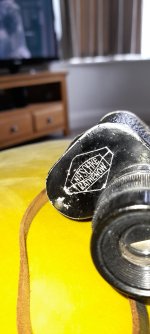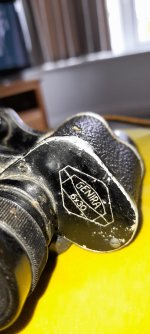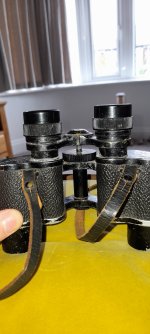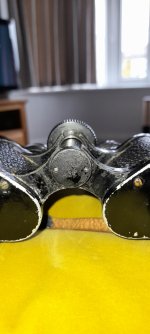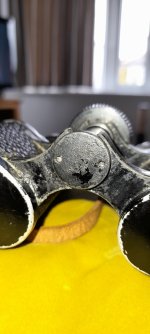Hi all, picked up these binoculars quite cheap and I'm hitting a brick wall so far. What I know is that the D.R.G.M stamp on the hinge is a sort of patent 'made in Germany ' mark used from the early 20th century up until 1952. I'm not finding any that are the same magnification, 6x30. I don't think they are a military pair but I'd be keen to know the age of manufacture. They do work although the right eye individual focus is not operating, I want to make sure they are not super rare as I'm thinking of cleaning the lens and prisms, cheers .
-
Welcome to BirdForum, the internet's largest birding community with thousands of members from all over the world. The forums are dedicated to wild birds, birding, binoculars and equipment and all that goes with it.
Please register for an account to take part in the discussions in the forum, post your pictures in the gallery and more.
Nitschke Genira, Rathenow 6x30 binos (1 Viewer)
- Thread starter blackstan
- Start date




